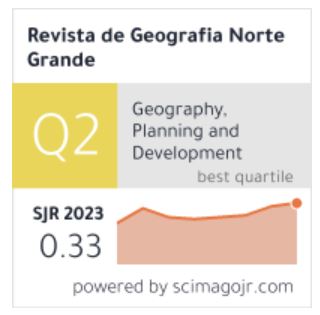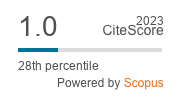Recent vegetational changes and environmental perception: The case of Santiago de Chile
Keywords:
Vegetational changes, environmental perception, sclerophyllous forestsAbstract
The piedmont of the northeastern and eastern edges of the city of Santiago de Chile, until recently covered by sclerophyllous evergreen forests, has begun to be dismantled as a by-product of an accelerated urbanization process. Since there is still no quantification of the extent of the change produced, nor is it known how citizens value this change, this first effort has been made to evaluate both variables, trying to account for the relationships that may exist between them.
The first part shows the result of comparing photomosaics (scales 1: 5,000) corresponding to the years 1956 and 1980, which indicate the distribution of vegetation in both periods. In general, it has been possible to detect that, during this period, the natural sclerophyllous vegetation has notoriously receded and has been replaced either by successional vegetation types or by by-products of domestic grazing.
The second part of the paper presents the results of an environmental perception survey conducted among groups of students and middle-income shopkeepers. These surveys attempted to evaluate the preferences and valuation (according to various criteria) that the two populations have for six common vegetation types in the foothills in front of Santiago. It was found that, in general, forested systems are preferred even though no distinction seems to be made between what is original and what is the product of anthropic degradation. People seem not only to show preferences for vegetational "gestalts" with many trees, which in this case correspond to the original types, but also give importance to the preservation of these systems. This even though most of them do not seem to know directly the places and species involved.
The final part of the paper attempts to explain how the preservationist campaigns aimed at avoiding the destruction of periurban sclerophyllous forests have not been echoed by the population, in spite of the above-mentioned valuations. This is discussed on the basis of an identification of the different socioeconomic groups involved in the advance of the urban, agricultural and firewood extraction frontiers, on the one hand, and the lack of education and motivation of the citizens, on the other.
Downloads
References
27-55. Inst. de Geografía. P. Universidad Católica de Chile, Santiago.
DI CASTRI, F. 1975: Esbozo Ecológico de Chile. Ministerio de Educación. Chile (mimeo).
DI CASTRI, F. y HAJEK, E.R. 1986: Bioclimatología de Chile. Edit. Universidad Católica de Chile, Santiago, Chile.
FILP,J.,E.R.FUENTES; S. DONOSO y MARTINIC, S. 1983: Environmental Perception of Mountain Ecosystems in Central Chile: An Exploratory Study. Human Ecology 1: 345-351.
FUENTES, E.R. and HAJEK, E.R. 1979. Patterns ~f Landscape Modificationin Relation to Agricultural Practice in Central Chile. Envíronmental Conservation, 6: 265-271.
FUENTES, E.R.; JAKSIC, F.M. y SIMONETTI, J. 1983. European rabbits versus native rodents in Central Chile: effects on shrub seedlings. Oecologia (Berlin) 58: 411-414.
GUTIERREZ, J. and FUENTES, E.R. 1979: Evidence of intraspecific competition in the A cacia caven savanna of Chile. Oecologia Plantarum 14: 151-158.
HOFFMANN, A.J. Y HOFFMANN, A.E. 1980: Percepción de la vegetación en la Cordillera de los Andes, Chile Central. Studia. Oecologica 39-57. 1982: Altitudinal ranges of Phanerophytes andChamaephytes in Central Chile. Vegetatio 48: 151-163.
MOONEY, H.A. 1977: Convergent Evolution in Chile and California Dowden Hutchinson and Ross.






